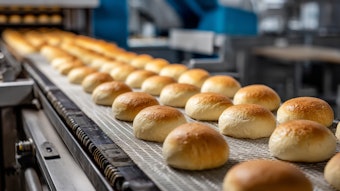The first published reference to cyclodextrins was by Villiers in 1891. Subsequent work by Schardinger in 1903 is still acknowledged by the continued use of the term Schardinger dextrins. A detailed reference to the research conducted prior to 1957 has been published by French.
The few people in manufacturing industry who have heard of cyclodextrins know of them as expensive fine chemicals. Recent advances in enzyme technology, coupled with increased scale production, have brought β-cyclodextrin (BCD) to a point where it can be used economically in food and cosmetic applications, although it cannot be considered as a cheap carrier. Many workers, however, are finding applications for its unique properties and stabilizing ability. In such cases it is cost effective.
Cyclodextrin Chemistry
Cyclodextrins are produced by the action of the enzyme cyclodextrin transglycosylase (CTG) on a maltodextrin solution, produced by the digestion of starch with α-amylase. Three cyclodextrins are obtained: α-, β- and γ having 6, 7 and 8 glucopyranose units, respectively. The most common and most suitable for flavour application is β-cyclodextrin.










